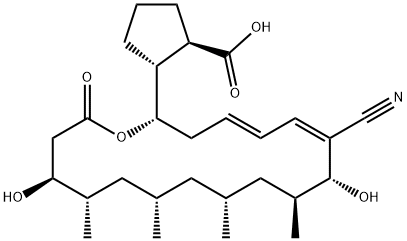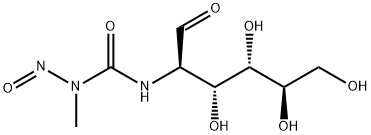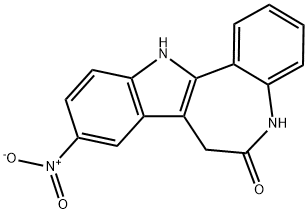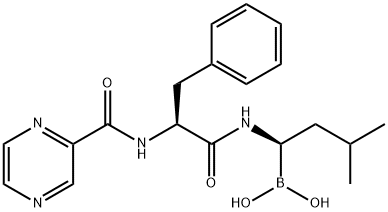BORRELIDIN
Synonym(s):2-(7-Cyano-8,16-dihydroxy-9,11,13,15-tetramethyl-18-oxooxacyclooctadeca-4,6-dien-2-yl)-cyclopentanecarboxylic acid;Borrelidine;Cyclopentanecarboxylic acid;NSC 216128;Treponemycin
- CAS NO.:7184-60-3
- Empirical Formula: C28H43NO6
- Molecular Weight: 489.64
- MDL number: MFCD08276914
- SAFETY DATA SHEET (SDS)
- Update Date: 2024-10-28 16:48:35

What is BORRELIDIN?
Description
Borrelidin (7184-60-3) ia a novel macrolide which inhibits bacterial and eukaryotic threonyl-tRNA synthetase.1 Displays potent anti-angiogenic activity (IC50=0.8 nM) and induces the collapse of newly formed capillary tubules.2 Modulates alternative splicing of VEGF in favor of anti-angiogenic isoforms.3 Induces apoptosis in ALL cell lines.4 Induces unfolded protein response in oral cancer cells.5 Cell permeable.
The Uses of BORRELIDIN
Borrelidin is an unusual nitrile-containing metabolite isolated from Streptomyces. Originally discovered as active against Borrelia species, borrelidin has since found a role as a selective inhibitor of bacterial and eukaryal threonyl-tRNA synthetase. More recent research has found that borrelidin is a very potent angiogenesis inhibitor and induces apoptosis of the capillary tube-forming cells. Borrelidin is an important lead for antimalarial discovery, displaying activity against drug-resistant Plasmodia.
The Uses of BORRELIDIN
Borrelidin is a secondary metabolite produced by Streptomyces and other bacteria. It displays potent antiangiogenic activity, preventing tube formation in rat aorta explants (IC50 = 0.8 nM) and inducing apoptosis in endothelial cells. Borrelidin also alters the splicing of VEGF mRNA, producing an antiangiogenic isoform of the growth factor. It has long been known as a powerful inhibitor of both eukaryotic and bacterial threonyl tRNA synthetase. Borrelidin is also an effective anti-malarial drug, as it kills P. falciparum with an IC50 value of 1.8 nM. At higher doses, it inhibits cyclin-dependent kinase in yeast (IC50 = 24 μM), resulting in growth arrest in the G1 phase.
What are the applications of Application
Borrelidin is an anti-angiogenic and anti-microbial compound
Definition
ChEBI: A macrolide that is isolated from several Streptomyces species and displays antibiotic, antineoplastic and antimalarial properties.
General Description
Chemical structure: macrolide
Biochem/physiol Actions
Borrelidin is a potent angiogenesis inhibitor that induces apoptosis in capillary tube-forming cells. Also displays antimalarial activity against drug-resistant Plasmodia. Antimicrobial and selective threonyl t-RNA synthetase inhibitor.
storage
+4°C
References
References/Citations 1) Ruan et al. (2005), A unique hydrophobic cluster near the active site contributes to differences in borrelidin inhibition among threonyl-tRNA synthetases; J. Biol. Chem., 280 571 2) Kawamura et al. (2003), Anti-angiogenesis effects of borrelidin are mediated through distinct pathways: threonyl-tRNA synthase and caspases are independently involved in suppression of proliferation and induction of apoptosis in endothelial cells; J. Antibiot., 56 709 3) Woolard et al. (2011) Borrelidin modulates the alternative splicing of VEGF in favour of anti-angiogenic isoforms; Chem. Soc. 2011 273 4) Habibi et al. (2012), Borrelidin, a small molecule nitrile-containing macrolide inhibitor of threonyl-tRNA synthase, is a potent inducer of apoptosis in acute lymphoblastic leukemia; Invest. New Drugs, 30 1361 5) Sidhu et al. (2015), Borrelidin Induces the Unfolded Protein Response in Oral Cancer Cells and Chop-Dependent Apoptosis; ACS Med. Chem. Lett., 6 1122
Properties of BORRELIDIN
| Melting point: | 143-145℃ |
| Boiling point: | 584.45°C (rough estimate) |
| Density | 1.1362 (rough estimate) |
| refractive index | 1.6290 (estimate) |
| storage temp. | −20°C |
| solubility | DMSO: 1 mg/mL |
| pka | 4.56±0.40(Predicted) |
| form | White to off-white powder. |
| color | Off-white |
| Stability: | Stable for 2 years from date of purchase as supplied. Solutions in DMSO or ethanol may be stored at -20° for up to 3 months. |
Safety information for BORRELIDIN
| Signal word | Warning |
| Pictogram(s) |
 Exclamation Mark Irritant GHS07 |
| GHS Hazard Statements |
H315:Skin corrosion/irritation H319:Serious eye damage/eye irritation H335:Specific target organ toxicity, single exposure;Respiratory tract irritation |
| Precautionary Statement Codes |
P261:Avoid breathing dust/fume/gas/mist/vapours/spray. P271:Use only outdoors or in a well-ventilated area. P280:Wear protective gloves/protective clothing/eye protection/face protection. |
Computed Descriptors for BORRELIDIN
New Products
4-AMINO-TETRAHYDRO-PYRAN-4-CARBOXYLIC ACID HCL 4-(Dimethylamino)tetrahydro-2H-pyran-4-carbonitrile 4-Aminotetrahydropyran-4-carbonitrile Hydrochloride (R)-3-Aminobutanenitrile Hydrochloride 3-((Dimethylamino)methyl)-5-methylhexan-2-one oxalate 1,4-Dioxa-8-azaspiro[4.5]decane 5-Bromo-2-nitropyridine Nimesulide BP Aceclofenac IP/BP/EP Diclofenac Sodium IP/BP/EP/USP Mefenamic Acid IP/BP/EP/USP Ornidazole IP Diclofenac Potassium THOMAIND PAPER PH 2.0 TO 4.5 1 BOX BUFFER CAPSULE PH 9.2 - 10 CAP SODIUM CHLORIDE 0.1N CVS ALLOXAN MONOHYDRATE 98% PLATINUM 0.5% ON 3 MM ALUMINA PELLETS (TYPE 73) LITHIUM AAS SOLUTION 2-Bromo-1-(bromomethyl)-3-chloro-5-nitrobenzene 2-Bromo-3-nitroaniline N-(3-Hydroxypropyl)-N-methylacetamide 3-Bromo-6-chloropyridazine 4-ethyl-3-nitrobenzoic acidRelated products of tetrahydrofuran








You may like
-
 Borrelidin CAS 7184-60-3View Details
Borrelidin CAS 7184-60-3View Details
7184-60-3 -
 1-Methyl-6-oxo-1,6-dihydropyridazine-3-carbonitrile 98%View Details
1-Methyl-6-oxo-1,6-dihydropyridazine-3-carbonitrile 98%View Details
99903-60-3 -
 1823368-42-8 98%View Details
1823368-42-8 98%View Details
1823368-42-8 -
 2-(3-(tert-butyl)phenoxy)-2-methylpropanoic acid 1307449-08-6 98%View Details
2-(3-(tert-butyl)phenoxy)-2-methylpropanoic acid 1307449-08-6 98%View Details
1307449-08-6 -
 Ethyl 3-(furan-2-yl)-3-hydroxypropanoate 25408-95-1 98%View Details
Ethyl 3-(furan-2-yl)-3-hydroxypropanoate 25408-95-1 98%View Details
25408-95-1 -
 2-Chloro-5-fluoro-1-methoxy-3-methylbenzene 98%View Details
2-Chloro-5-fluoro-1-methoxy-3-methylbenzene 98%View Details
1805639-70-6 -
 1784294-80-9 98%View Details
1784294-80-9 98%View Details
1784294-80-9 -
 Lithium ClavulanateView Details
Lithium ClavulanateView Details
61177-44-4